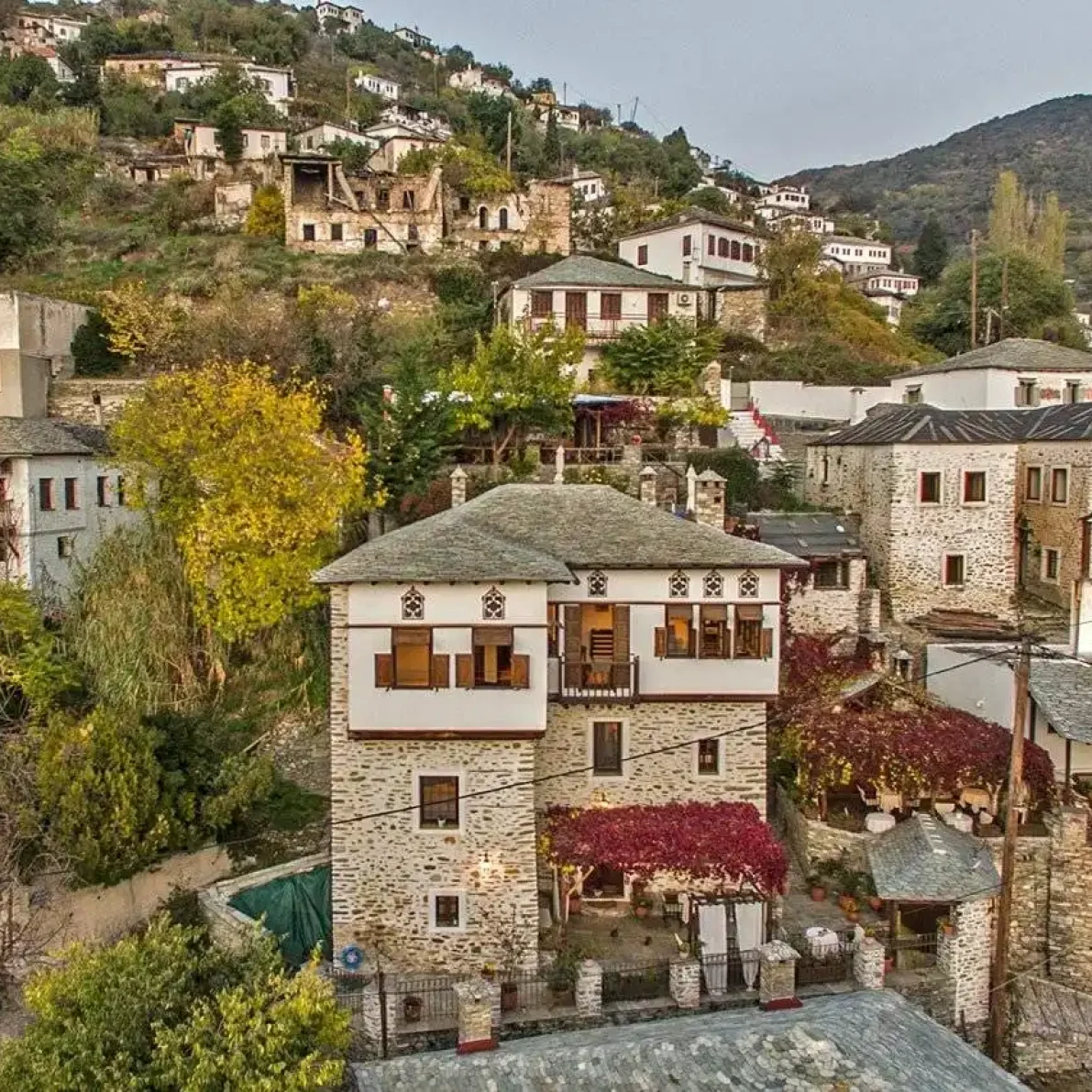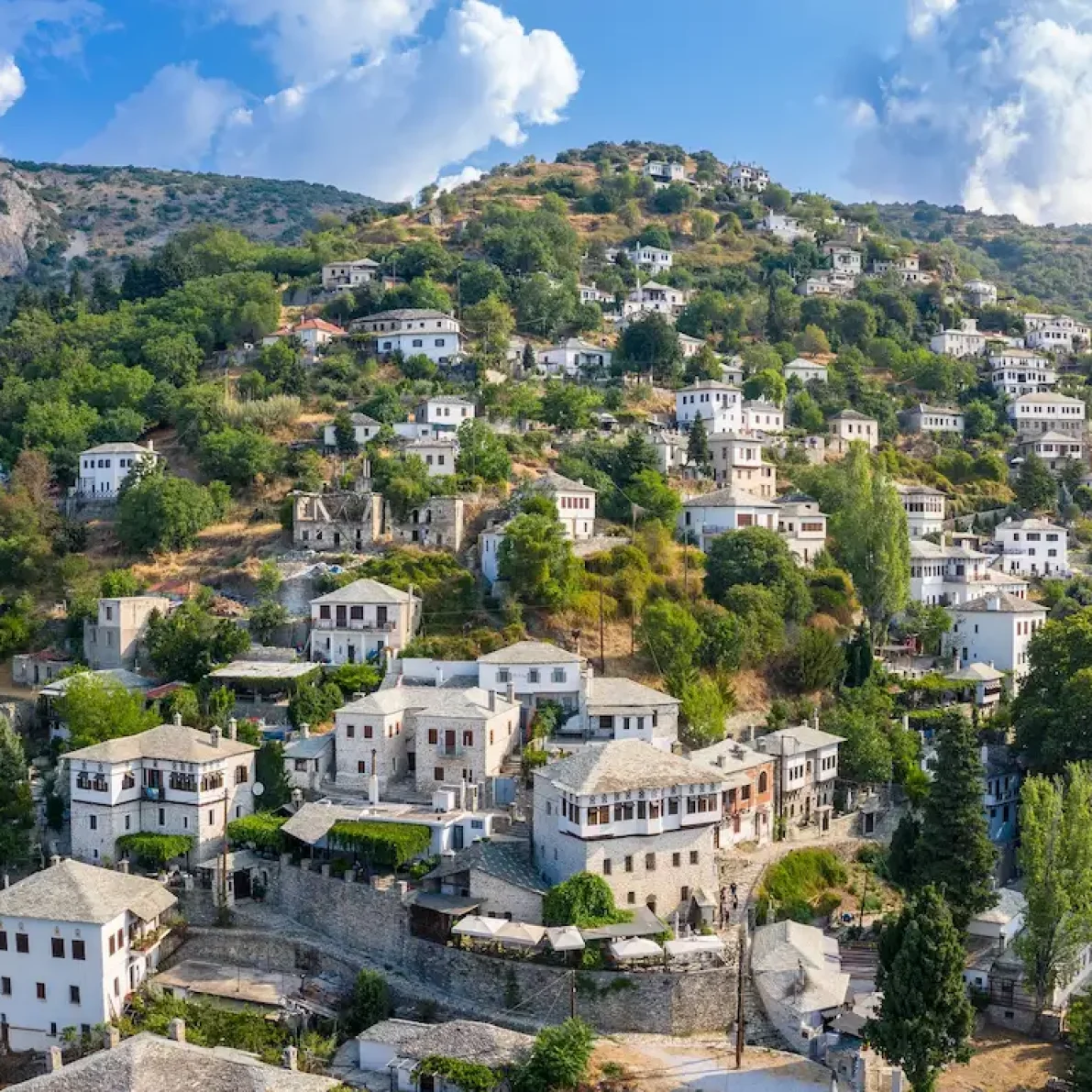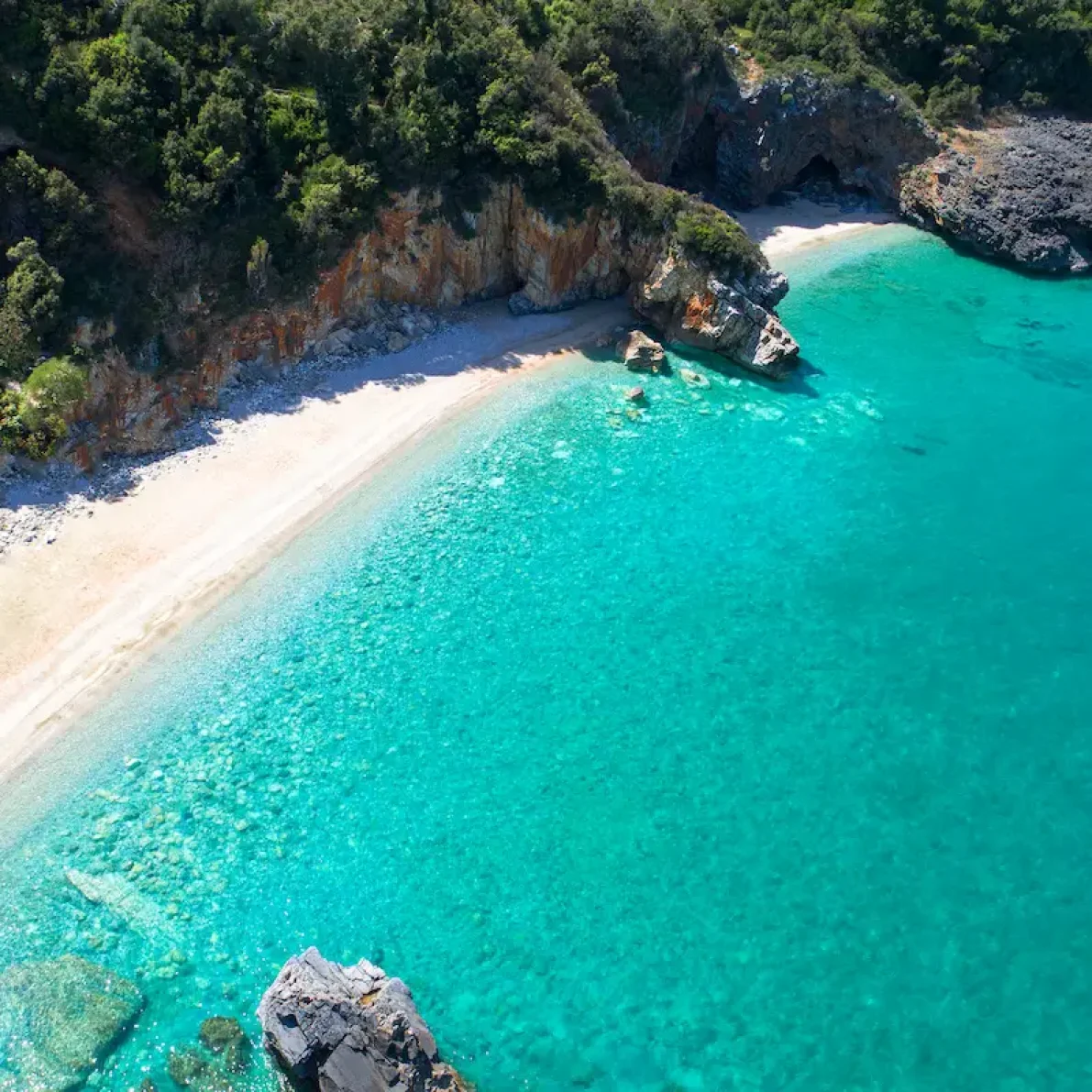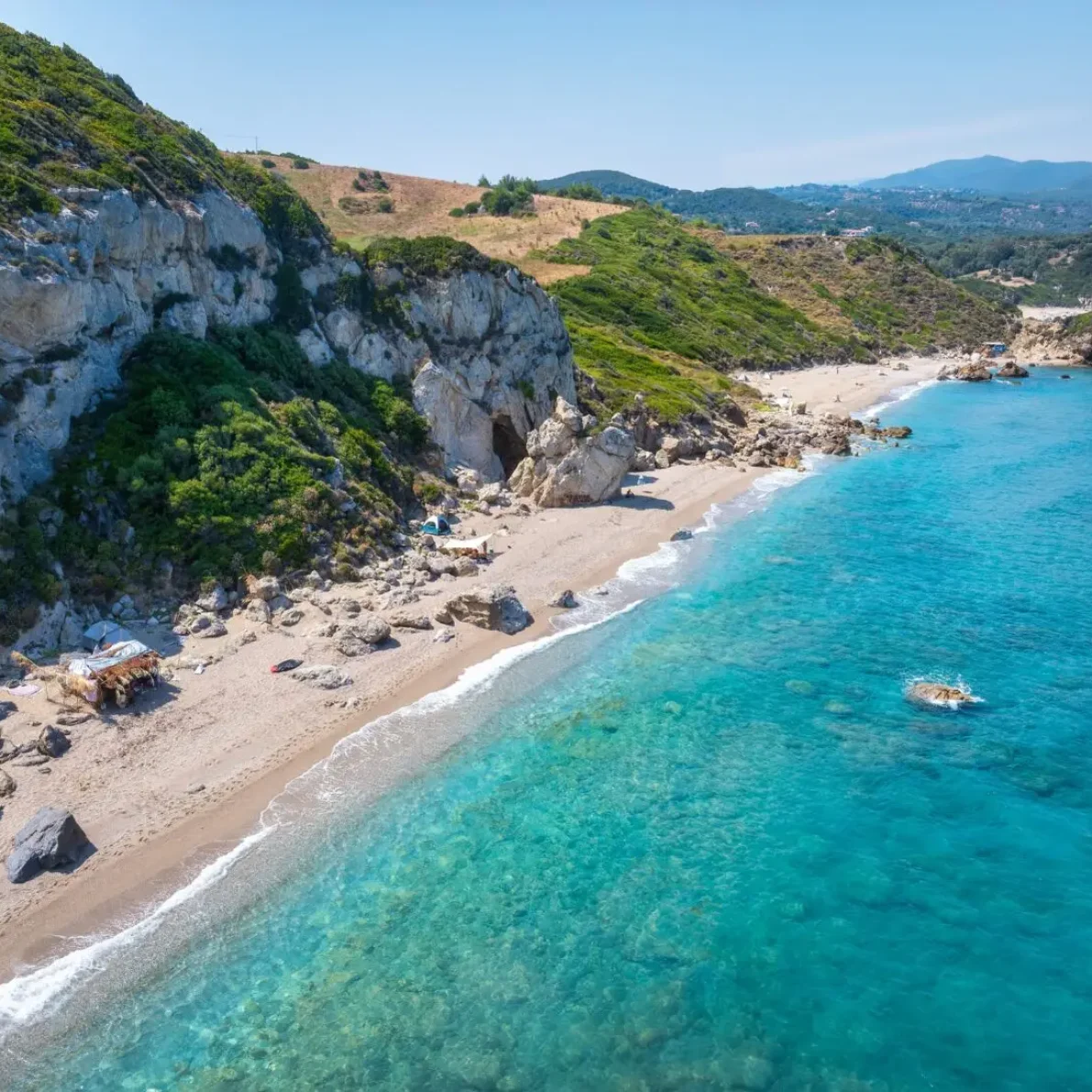Milies is a historic village of Pelion that pulsates with life all year long. Located in a privileged position on the mountain, Milies is a traditional village of great natural beauty. Some of its landmarks are the church of Pammegistoi Taxiarches (1741) at the central square of the village, the old train station on its lower parts, and the big metal bridge named after the architect De Chirico. Do not miss the experience of travelling on the famous ‘Moutzouris’ train, the most picturesque train trip in Greece.
The Agios Georgios Nileias is the most mountainous traditional village in Pelion with a rich spiritual tradition and historical presence over the years. It sprawls amphitheatrically beneath the Evzonas peak and offers a unique view of the Pagasetic Gulf. It harmoniously combines natural beauty with its Pelion-style and neoclassical mansions, stone-built and marble fountains, its central square with plane trees, and its museum spaces.
Only two kilometers away lies Vyzitsa, a small village and living monument of Pelion architecture. Its excellent restored mansions and ecclesiastic monuments, its cobbled streets, its small square and its stone fountains place Vysitsa among the best-preserved sites of typical architecture in Greece.
Leaving Vysitsa you will arrive to Pinakates, a village that has maintained all the original features of a typical village in Pelion. Walking on its cobbled streets, the visitor will meet the old mansions of the village and its renowned ‘hidden’ picturesque square, with its century-old plane tree and a special marble fountain.
Kato Gatzea is the closest village to Agios Georgios Nileias; a sea village loved for its spectacular sunset, its peacefulness, and its picturesque island-like vibe.
Kala Nera is one of the newest sea villages in Pelion, that has met essential development, as beautiful as all others. It has the longest beach in the Pagasetic Gulf, with crystal clear water, plane trees and eucalyptuses reaching the shore. A vivid place throughout the year.
Agios Lavrentios is located high on the mountain, only 11 kilometers from Agria. The village is a striking example of local craftmanship, with wonderful, restored mansions, numerous stone fountains and has one of the most important trail networks.


Portaria, the first village you come across driving up the mountain of the Centaurs, together with Makrinitsa, only a little further, is one of the most cosmopolitan villages of Pelion, whose traditional character and natural beauty have respected the past and have remained unchanged over the years. Restored, traditional mansions, authentic pieces of Pelion architecture, stone fountains and churches constructed in the 17th and 18th century with ornate reliefs and local museums, traditional taverns and shops selling homemade local products will meet the taste of all types of visitors. Makrinitsa, the so called ‘Balcony of Pelion’, enjoys a magnificent view of Volos and the Pagasetic Gulf.
Higher on the mountain, at an altitude of 1200 meters, in a dense forest of firs, chestnut and beech trees, there is the small village of Hania, home to one of the oldest and most popular ski centres in Greece at the position Agriolekfes. Throughout the year, Agriolefkes maintains the exclusive privilege of an incredible view of the Aegean Sea and the Pagasetic Gulf.
The mountain’s majesty meets its architectural tradition in Zagora, the largest and most historic village of Pelion, which has become famous for its apples. The village is built, and together with its marvelous tower houses, its old monasteries, its numerous churches, its monumental fountains, and its historical library, as well as its port, Horefto, it is a must-visit location in Pelion, at least once in life. Pouri, a small beautiful mountainous village is located close by, at the very end of the route to Eastern Pelion.
Kissos and Mouressi are ideal spots for nature lovers. These two small, picturesque villages, with their beautiful and green squares, are ideal for a short fresh stop that might be best combined respectively with a visit to the churches of Agia Marina in Kissos (17th century) and Agia Triada in Mouressi (18th century).
Tsagarada is a village divided into four districts shaded by century old trees, which has preserved Pelion’s traditional architecture. Wonderful squares with giant plane trees, as well as churches, traditional mansions and cobbled streets are found on every next step.
A well-preserved cobbled pathway leads to Damouchari beach, from where it is easy to reach the wide beach of Agios Ioannis, with its typical light blue water. Close to Tsagarada is Mylopotamos, a much-loved beach of Pelion, as well as the beaches Fakistra, Plaka and Papa Nero.


Southern Pelion’s nature is no less magnificent that that of the rest of the mountain of Centaurs. Leaving Argalasti, the largest village in the area, and not so far, the visitor can discover the beaches of Potistika, Melani and Paltsi on the Aegean Sea, some of them sandy, others covered with pebbles, crystal blue water, while sometimes having playful waves.
The beaches on the Pagasetic Gulf are serene and sheltered from the wind. They lay between picturesque villages and olive groves along Lefokastro, Kalamos, Horto, Milina, Tzasteni and hide in small coves down to Trikeri and Agia Kyriaki, the beautiful fishing village on the southernmost point of Pelion.
Lafkos is one of the most splendid villages in Pelion, offering a panoramic view to the coasts of the Pagasitikos Gulf. It takes pride in its fabulous, tiled square, where the Church of Holy Mary and its sublime belfry of the 19th Century are located, and the coffee shop of Emmanouel Forlidas (1785), probably the oldest in Greece, as well as its cobbled streets, its mansions and its unique Radio Museum.
Subscribe to our newsletter and stay updated with our offers.